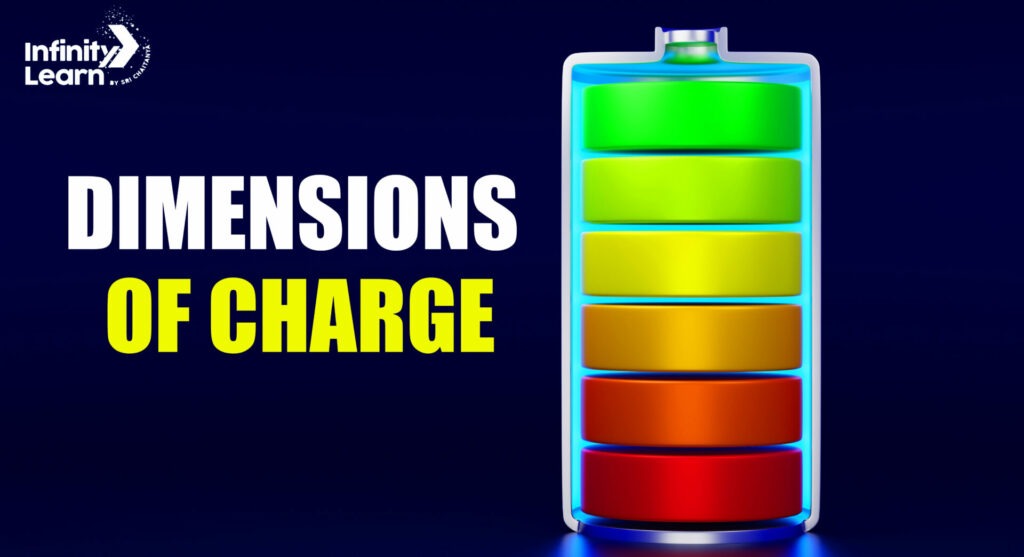
Courses

By Shailendra Singh
|
Updated on 16 Dec 2024, 11:31 IST
Dimensions of Charge: Once placed in an electromagnetic field, the physical property of matter known as electric charge causes it to experience a force. A positive or negative electric charge can exist (commonly carried by protons and electrons respectively). In fact, the charges that are similar repel each other, while charges that are dissimilar attract each other. Also, the phrase “neutral” refers to an object that has no net charge. Classical electrodynamics refers to early knowledge of how charged substances interact, and it is still accurate for problems that do not require consideration of quantum effects.
Electric charge is indeed a conserved property; the net charge of an isolated system, which is the sum of positive and negative charges, cannot change. Subatomic particles carry electric charges. In regular matter, electrons carry a negative charge, while protons carry a positive charge in the nuclei of atoms. When a piece of matter has more electrons than protons, it has a negative charge; if there are fewer, it has a positive charge; and if there are equal numbers, it is neutral.

The coulomb (C), called after French physicist Charles-Augustin de Coulomb, is the SI-derived unit of electric charge. The ampere-hour is also commonly used in electrical engineering (Ah). The elementary charge (e) has been commonly used as a unit in physics and chemistry. The Faraday constant is often used in chemistry to calculate the charge on a mole of electrons. The lowercase letter q has been frequently used to represent charge.
Even though the net charge of an object is zero, the charge can be distributed non-uniformly within the object (e.g., due to an external electromagnetic field, or bound polar molecules). The object seems to be polarized in such cases. The charge generated by polarization is known as a bound charge, whereas the charge produced on an object by electrons gained or lost from outside the object is known as free charge. Electric current is indeed the movement of electrons in conductive metals in a specific direction.
The dimensional formula of charge can be represented as:
[M0 L0 T1 I1]
Here,

M = Mass
I = Current
L = Length
T = Time
We have, Electric Charge (Q) = Electric Current × Time . . . . (1)
Then, the dimensional formula of Current and Time is [M0 L0 T0 I1] and [M0 L0 T1] respectively . . . . (2)

Now, when substituting equation (2) in equation (1) we get,
Electric Charge = Electric Current × Time
That is, Q = [M0 L0 T1 I1]
Thus, the charge has been dimensionally represented as [M0 L0 T1 I1].
Electric charge is a fundamental property of matter that causes it to experience a force when placed in an electric or magnetic field. Charges can be positive or negative.
Electric charge is measured using instruments such as:Electrometers., Coulombmeters, Charge sensors
The dimensions of charge help: Ensure dimensional consistency in equations. , Relate charge to other physical quantities like current and time.